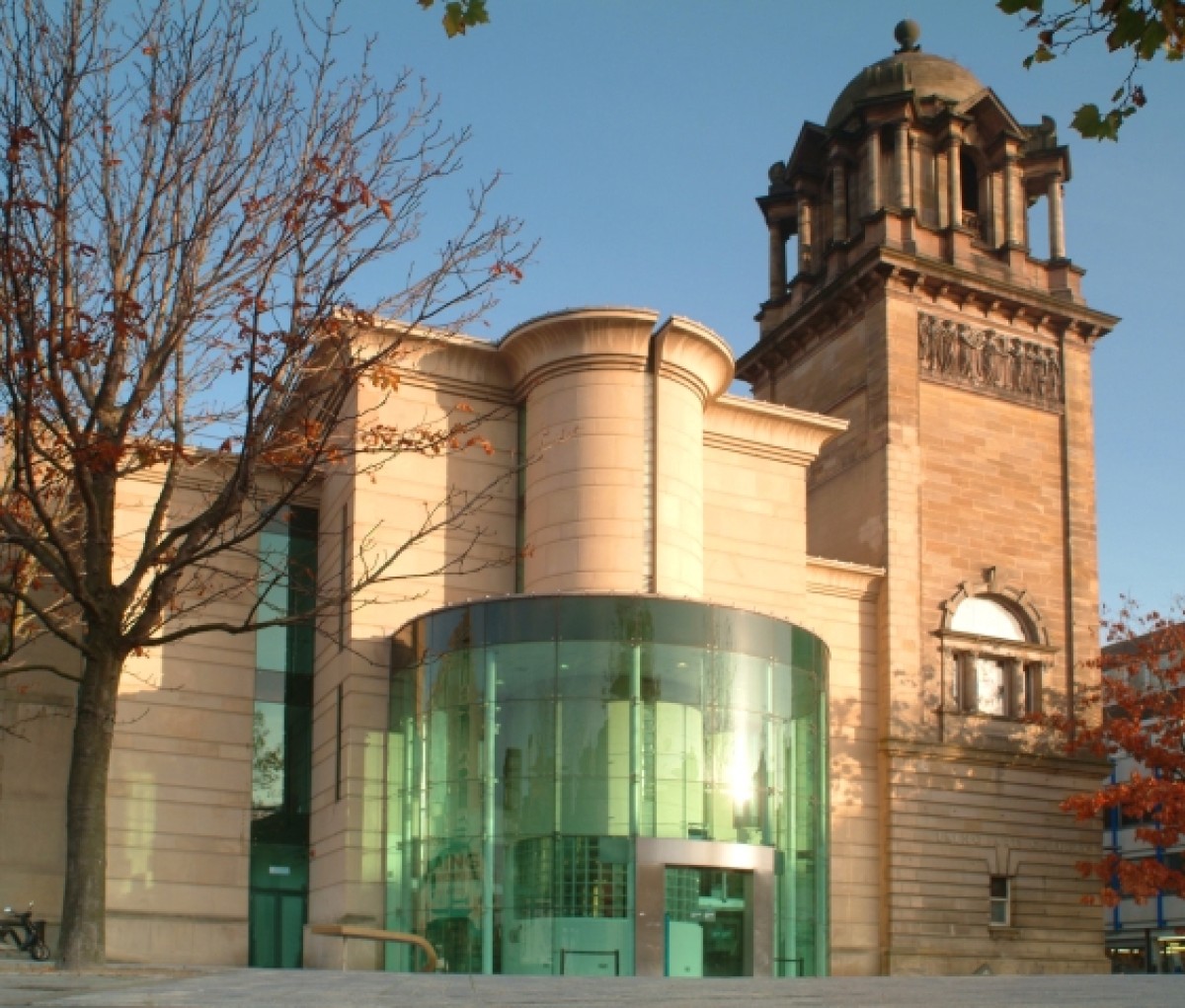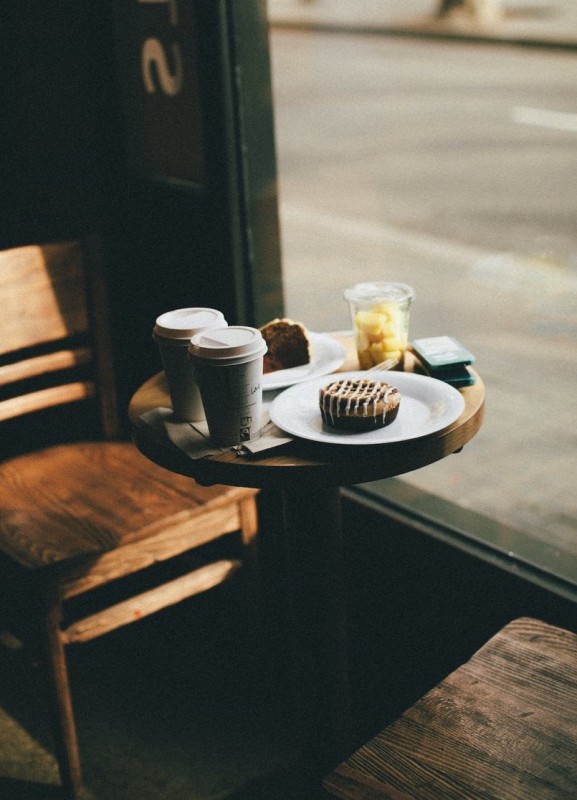Behind the Door Of… The Laing Art Gallery
Take a trip around Laing Art Gallery with chief curator Julie Milne

Laing Art Gallery is one of the most beloved cultural institutions in the city, an internationally-renowned collection of art in various media but primarily British oil and watercolour paintings, ceramics, silver and glassware, all housed in an iconic building on the edge of the city centre.
As part of our occasional Behind The Door Of… series, we spoke to Julie Milne, who is Chief Curator of Art Galleries for Tyne & Wear Archives & Museums about Laing Art Gallery and its collections.

We started by asking Julie to sum up the gallery and its mission statement. “The Laing Art Gallery is the North East's premier art gallery with an internationally significant collection of historical and contemporary art,” she explains. “It is a destination for a high-quality cultural experience appealing to a range of audiences, drawing local, national, and international visitors to Newcastle and the North East.”
The Laing was founded by Alexander Laing, “a public-spirited businessman who wanted to give something back to the city that had made him so prosperous,” explains Julie. There have been numerous changes to the building over the intervening 120 years – the demolition of the library next door, a three-storey development in 1975 and the building of and extension in 1996 with its entrance visible from Northumberland Street.
Julie has worked at the Laing for more than twenty years and says that while there haven’t been any large-scale changes to the gallery in that time, there have been smaller alterations when the opportunity has presented itself, particularly a centenary refurbishment in 2004, when the stained-glass window was reinstalled and the pillared hall was redecorated. And most importantly, the Northern Spirit Gallery was reopened in 2010.

Julie is the first to admit that maintaining the building within budget can be challenging and in 2012 the gallery started charging for special exhibitions. “If we had the choice the exhibitions would remain free but there simply isn't the funding to do this. To bring world-class art to the region we need to charge. Charging covers the costs of putting the exhibitions on and is not a money-making venture.”
She is keen to demonstrate the benefits that charging admission brings to the gallery’s exhibitions. “Charging and fundraising has enabled us to put on some wonderful exhibitions over the years, not least the Enchanted Garden in 2018 with works by Monet, Bonnard, Vanessa Bell, William Morris and Burne-Jones, Challenging Convention in 2021 with works by Laura Knight, Gwen John, Vanessa Bell and Dod Procter. And also The Lindisfarne Gospels in 2022, Essence of Nature in 2023 and - in 2024 - Turners’ The Fighting Temeraire will travel to Newcastle as part of the 200-year-old celebrations of the National Gallery.”
The aforementioned Northern Spirit gallery re-opened in 2010 and we asked Julie to explain its purpose and ethos. “Northern Spirit celebrates the art of the North East in the gallery’s collection. It tells the stories of the lives of the artists and makers who were either born, inspired or who made their career in the region, and it includes internationally important artists such as John Martin, Victor Pasmore and Thomas Bewick alongside Sowerby glass, Newcastle silver, Maling pottery and some lesser known but talented artists like Louisa Hodgson.”

Beyond the period of the collection, we asked Julie what the organising principle or theme behind the eighteenth and nineteenth century collection in the upstairs gallery is. “During the pandemic we undertook a rehang of the collections over two large rooms - researching the collections and producing a new permanent display charting the collection from its very beginnings to the present day,” Julie explains.
“It represents the well-known and popular works and also highlights works by female artists and those artists from different cultural backgrounds. We moved away from the previous chronological approach highlighting the well-known 18th and 19th century strengths of the collections but looking instead at when works actually came into the collection. This brought historical and contemporary works together, offering surprising juxtapositions.”
These juxtapositions have proved especially interesting for the gallery’s learning team, Julie adds. “It enabled them to make creative and meaningful connections for school children and encourages active looking. The juxtaposition of historical, contemporary and modern works is a hugely impactful tool when working with schools, as it demonstrates a broad diversity of art. The contrast of artworks draws pupils' attention to works that they may not have usually been interested in; deepening their experience, widening their personal lens, and helping them to connect in a more meaningful way to the artworks as part of their visit. A contrast that has been particularly noted is William Holman Hunt's Isabella & The Pot of Basil displayed closely to portraits by Chris Ofili and Marlene Dumas’s watercolour portrait of Amy Winehouse, all completely different works stylistically and art-historically but equally engaging and inspiring to children and young people.“
A notable current show – running until the middle of October – is Essence Of Nature, which Julie explains presents artistic depictions of nature from the 1850s to the 1930s, from the highly realistic works of the pre -Raphaelites to groups like the rural naturalists, who depicted nature in harmony with its people, or the British impressionists who were concerned with light and atmosphere.
The gallery is keen to maintain its position as the city’s local art gallery and they work hard to ensure the programmes reflect this, while still representing the city at a national level. “The Northern Spirit Gallery does this to a large extent, celebrating the achievements of artists, makers and manufacturers of the North East of England and highlighting their national and international significance.” Julie explains. “It is important that Laing Art Gallery continues to develop its audiences and programmes – keeping track of emerging communities and opportunities to reach out to new audiences.”
The gallery works with a variety of community and young people's groups to achieve this, like Little Artists, Art Academy, Art Schools and the L-Ink young people's programme. These groups aim to develop skills, knowledge and engagement. “There’s also a strong volunteer Friends of the Laing group with hundreds of members who raise funds and advocate for the Gallery through social events and organised tours and talks.”

As you’d expect, Julie clearly loves working at the Laing and her enthusiasm is infectious. “What a privilege it is to work in a place which is home to such wonderful art collections with paintings by Burne Jones, Holman Hunt, John Martin, Glenn Brown, Chris Offili, JMW Turner, Gillian Ayres and Nerys Johnson to name but a few. The building is special too, the wonderful marble hall and art nouveau detailing in the silver handled doors, the stunning arts and crafts stained-glass window on the stairs: it’s a work of art in itself. The Gallery as a whole is not too big either, it has a cosy feeling which I know many visitors love.”
While it’s probably unfair to do so, we always ask people in roles like Julie’s to name a favourite or two in the gallery. John Martin is perhaps the artist most associated with the Laing and it’s no surprise that Julie focusses on his work. “We have the most comprehensive collection of his work in the world. Two outstanding examples are The Destruction of Sodom & Gomorrah (1852) and The Bard (1817), both on permanent display. His powerful and unique vision is represented in collections around the world including Tate Britain. I like the fact he was locally born (Haydon Bridge in Northumberland) and self-made, from a poor background. He became one on the most popular artists of his day and sometimes displayed his works as popular attractions that people would pay to go and see much the same way you would go to the cinema today. He became known as the king of the vast, a choreographer of tumultuous catastrophe. The generally sensationalist and apocalyptic treatment captured the imagination of the public. In the Northern Spirit Gallery, you can get a sense of this in the interpretation around the painting Sodom and Gomorrah, which features a sound and light show. In fact, he has directly influenced directors like DW Griffiths, and the cinematographer Ray Harryhausen who was responsible for fantasy films like Jason & The Argonauts (1963) and also inspired generations of film makers like George Lucas and Peter Jackson.”

We finish by asking Julie about any forthcoming events we should know about and she tells us about Yevonde, a touring show from the National Portrait Gallery. “Yevonde Middleton used the professional name Madame Yevonde and was a pioneering female photographer whose motto was ‘be original or die’.” Julie explains. “Middleton was a former suffragette and early exponent of colour photography in the 1930s, and the exhibition features portraits and still lives produced by Yevonde over a colourful 60-year career.”
And in May next year, the UK’s most popular painting, The Fighting Temeraire, comes to the Laing as part of the National Gallery’s 200-year celebrations, in which a number of galleries will display a key painting from the National Gallery’s collection. “We have taken the opportunity to build an ambitious exhibition around this iconic painting and artist, placing it in a North Eastern context of art, industry and nostalgia. We have already secured loans of other works by Turner and his contemporaries from the Tate and Victoria & Albert. It spans four themes - Turner: A Painter Of Seas, Skies & History; The Temeraire At Trafalgar; Thames To Tyne: The Two Great Rivers Of The Industrial Revolution; and The Rise & Fall Of Industry & New Beginnings. We are all excited to be working on this fantastic programme.”

Julie Milne’s immersion in, and deep affection, for the place she works is entirely understandable: Laing Art Gallery really is an excellent gallery that gets everything right in terms of its collections, its approaches and its place within the cultural life of the city. And its central location means it’s remarkably accessible, especially if you work in, live in or visit Newcastle city centre.
Why not make a trip or two to lose yourself in its many wonders – it’s ours to use and that’s a tremendous thing.
The Laing Gallery is open from 10am - 4.30pm Monday to Friday (closed on Sundays and Bank Holidays).



